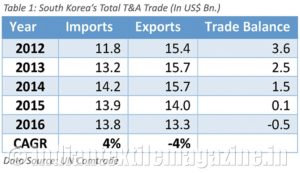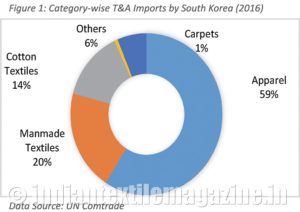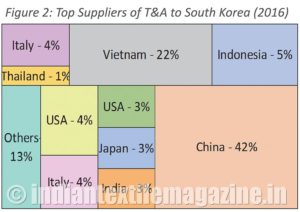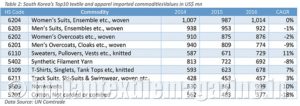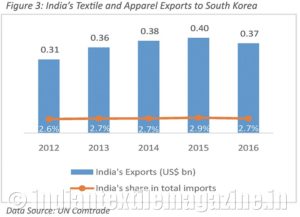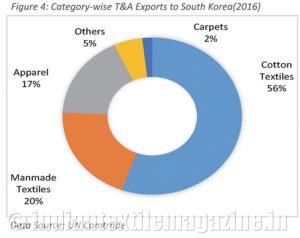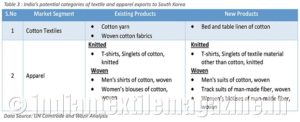Textile and apparel imports by South Korea increased at a CAGR of 4% to reach $13.8 billion in 2016, while its exports declined at CAGR of -4% to touch $13.3 billion in the past five years. The textile and apparel trade balance recorded a deficit of around $0.5 billion in 2016.
Apparel is the largest imported category in South Korea, representing 59% of the total textile and apparel imports (2016). This is followed by man-made textiles, cotton textiles and carpets with a share of 20%, 14% and 1% respectively. Top 10 suppliers accounted for 87% of textile and apparel imports by South Korea. China is the largest supplier accounting for a 42% share, followed by Vietnam and Indonesia with a share of 22% and 5% respectively.
India’s textile and apparel exports to South Korea
India is the seventh largest supplier of textile and apparel products to South Korea, with its exports touching a level of $374 million in 2016. It has registered CAGR of 5% over the last five years, and India’s share has increased from 2.6% in 2012 to 2.7% in 2016.
Cotton textiles is the largest category with a share of 56% in India’s T&A exports to South Korea. This is followed by man-made textiles, apparel and carpets with a share of 20%, 17% and 2% respectively.
India signed a Comprehensive Economic Partnership Agreement (CEPA) with South Korea in 2010. Even after seven years of its implementation, India’s share in the South Korean market is miniscule. It is important to note that India is a supplier of all the leading commodities which are imported by South Korea, but the respective share of India is very low.
Competitors like China and Vietnam, known for their low-cost manufacturing, have captured a bigger market share. However, Indian garment exporters and cotton-based home textiles manufacturers have a high potential to increase the market share in South Korea. For that, they need to focus on high quality products and work on faster delivery schedules.
By Wazir Advisors
